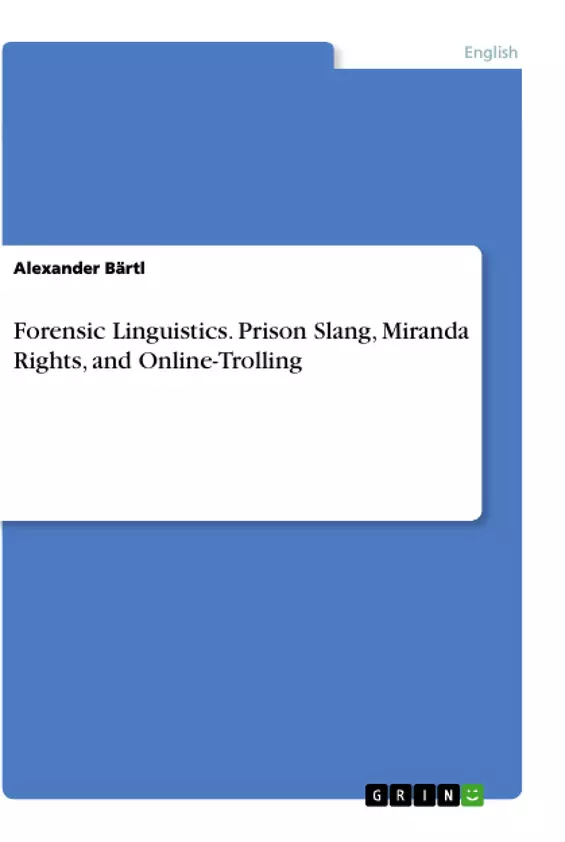This paper raises and discusses three selected questions on topics of forensics linguistics, i.e., prison slang, Miranda Rights, and the act of trolling online. Its idea, structure, and purpose are equal to term papers but in a very shortened and rudimentary yet discursive and critical way. Therefore, a variety of secondary sources and perspectives are taken into account. Furthermore, cultural and judicial aspects enhance the linguistic-based discussions and, therefore, reveal supplementary controversial issues.
Language fulfills different social functions and is of high relevance for everyday life in prison. Which (linguistic) features are characteristic for prison slang and which (social) functions do they fulfill?
Although the “Miranda Rights” were created to extend suspects’ protection, many problems may arise when looking at certain groups who are not fully capable of understanding the details and extent of the ‘Miranda Rights’
The act of trolling has become visible on presumably all SMPs and, beyond that, other platforms, such as Wikipedia, and is not always handled as a trivial offense. What is a troll (or trolling), what are his/her motivations, and why and how can trolling lead to legal repercussions?
Inhaltsverzeichnis (Table of Contents)
- Introduction
- Characteristics of Prison Slang
- The Place, the Sender, and the Recipient
- Cultural Influences on Prison Slang
- Linguistic Features of Prison Slang
- Overlexicalization and Relexicalization
- Functions of Prison Slang
- Secret Prison Slang
- Group Affiliation and Exclusion
- Conclusion
Zielsetzung und Themenschwerpunkte (Objectives and Key Themes)
This paper aims to explore the distinctive features of prison slang and its social functions. It investigates the origins, cultural influences, linguistic characteristics, and communicative purposes of this unique form of language.
- The development and characteristics of prison slang
- The role of cultural influences in shaping prison slang
- Linguistic features of prison slang, such as overlexicalization and relexicalization
- The social functions of prison slang, including communication, emotional release, and social order
- The use of secret languages and codes within prison slang
Zusammenfassung der Kapitel (Chapter Summaries)
- The introduction outlines the topic of prison slang and its relevance to forensic linguistics.
- The paper focuses on the characteristics of prison slang, exploring its origins, cultural influences, and linguistic features, including overlexicalization and relexicalization.
- The social functions of prison slang are examined, including communication, emotional release, social order, and the use of secret languages.
- The paper discusses the role of group affiliation and exclusion through the use of prison slang.
Schlüsselwörter (Keywords)
The key terms and concepts explored in this paper include prison slang, prison language, overlexicalization, relexicalization, cultural influences, social functions, communication, emotional release, social order, secret languages, group affiliation, and exclusion.
- Citar trabajo
- Alexander Bärtl (Autor), 2021, Forensic Linguistics. Prison Slang, Miranda Rights, and Online-Trolling, Múnich, GRIN Verlag, https://www.grin.com/document/1023954



